How I Do It: Functional Ideas for AAC Use at Home
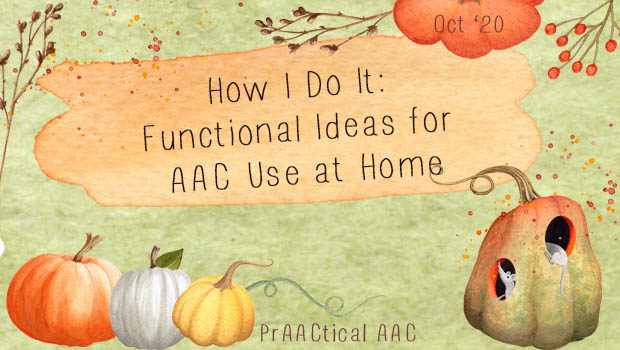
 Speech-language pathologists who serve individuals with complex communication generally have less time than they’d like to support families in implementing AAC at home. In today’s post, guest author Jesse Kleinman shares her ideas for using functional activities to support AAC learning. As an SLP in Brooklyn New York, she provides in-person and remote therapy to students with AAC needs.
Speech-language pathologists who serve individuals with complex communication generally have less time than they’d like to support families in implementing AAC at home. In today’s post, guest author Jesse Kleinman shares her ideas for using functional activities to support AAC learning. As an SLP in Brooklyn New York, she provides in-person and remote therapy to students with AAC needs.
Enjoy!
:::::::::::::::::::::::::::::::::::::::::::::::::::::::::::::::::::::::::::::::::::::::::::::::::::
How I Do It: Functional Ideas for AAC Use at Home
During this time, we have all been spending a lot of time at home to stay safe. It has been a trying time in these past couple of months, but as therapists, we are always adapting. As a speech-language pathologist, I was thrown into the world of teletherapy for about 6 months, and I’m now doing a hybrid approach where I see some of my students in person and others remotely. I’ve been seeing a majority of my AAC users remotely, and I had to think on my feet to figure out new and engaging ways to incorporate their devices into sessions via teletherapy! As always, I try to target a combination of core and fringe vocabulary. I also wanted to try to make my sessions functional for my students. I realized there are so many activity ideas just around the house – from doing laundry to cooking and baking, playing dress-up, and even cleaning!
Making a recipe is great because there are so many different things you can target. The best part is that both you and your AAC user can reap the rewards of your hard work and enjoy a yummy treat at the end. I love cooking and baking as both an activity for in-person and teletherapy because of the endless possibilities. I typically work on following directions using a visual schedule, incorporating both core and fringe vocabulary, describing ingredients and kitchen utensils, sequencing, commenting, turn-taking, and asking/answering questions. I’ve included a downloadable recipe that I created on Boardmaker for making a fruit smoothie which includes ingredients and steps to follow. Some core words to focus on during this activity might be get, want, eat, put, in/out, on/off, more, open, help, and good/bad. Some fringe words that would be great to include as well could be mix/stir, pour, yummy/yucky, add, measure, recipe, oven, clean up, bowl, hot/cold, hungry/thirsty, spoon, etc. Of note, depending on your AAC user, you may want to adapt the number of visual supports and the complexity of language that you provide within your visual schedule and your recipe. You may want to choose a simpler recipe with fewer steps or a more complex recipe with a longer list of steps to follow depending on your student.
Doing laundry can seem like a daunting task for some, but it is a great vocational skill to work on during sessions as well. You can target following directions, sorting (by color or cleanliness), describing, labeling, commenting, requesting, and more! I’ve included a downloadable sequenced visual schedule that I created on Boardmaker for doing laundry. Some core words you may want to focus on here could be get, in, on, stop, and put. Some fringe words to focus on could be clean/dirty, hot/cold, clothes, sort, pour, detergent, washing machine, wait, dryer, and fold. I suggest adding visual supports to a variety of household items to support comprehension for your AAC user, such as a “turn” visual on items that turn on and off. You can also use a visual schedule during laundry and other household tasks other than just recipe making. I would recommend modifying as you see fit dependent on your student here as well. You may incorporate shorter phrases with more visual supports, longer phrases or even paragraphs with reduced visual supports, or a story rather than sequenced steps.
Another fun activity idea that my students have loved is playing dress-up. I know as a little girl, I loved playing dress-up (I even used to call myself Queen Jessica Victoria). Dress-up is a fun way to embed both core and fringe vocabulary into a motivating and engaging activity. There are many ways to go about this – you can dress-up with costumes, get ready to go outside, or just have some fun with it! Personally, I like to do a check-in where we look at the weather and figure out what we need to get dressed to go outside. I love this activity because it is functional and something our students could benefit from to gain more independence in their daily lives! The other day, my student and I checked the weather and she helped me get ready for the cold by telling me to “put on jacket” and “get sunglasses.” Then, we reversed roles and I was explaining to her what clothing items she would need to be ready to go outside. Some core words to focus on during this activity might be put, on/off, get, I want, go, like, and no like. Some fringe words to focus on during this activity could be dress, take off, pretty, fun, outside, silly/funny, choose, etc. Again, make modifications here depending on your students’ age and abilities. Also, keep in mind here that some of our students may need assistance with dressing. There are also lots of fun carryover activities related to this on Boom Learning – one of my favorites being from Rachel Madel SLP (see her Boom cards here).
Remember to get creative and try to think outside of the box! Feel free to contact me directly with any questions and I would love to see how you used functional activities during your therapy session, whether they be in person or via teletherapy.
About the Guest Author
Jesse Kleinman is a speech-language pathologist based out of Brooklyn, New York. She works in a private specialized school with students ages 5-21 with complex needs and a variety of diagnoses including Autism Spectrum Disorder, Apraxia of Speech, Auditory Processing Disorder, Language Delays, Feeding Disorders, and more! She works with students using AAC devices ranging from low to high tech. More recently, Jesse has pivoted to find engaging ways to incorporate AAC into teletherapy sessions. Jesse believes in a team approach to therapy and therefore encourages collaboration with parents, teachers, and other therapists, when applicable, to provide the most encouraging and successful environment for her clients.
Check out Jesse’s website, Vibrant Speech Therapy, and her YouTube Channel. You can also find her on Instagram at Vibrant Speech Therapy.
Disclosures: Jesse is an ASHA Member. She is the owner of Vibrant Speech and Language Services and receives financial compensation for orders placed through her RedBubble shop.
Filed under: Featured Posts, PrAACtical Thinking
Tagged With: communication opportunities, downloads, Families caregivers and home
This post was written by Carole Zangari
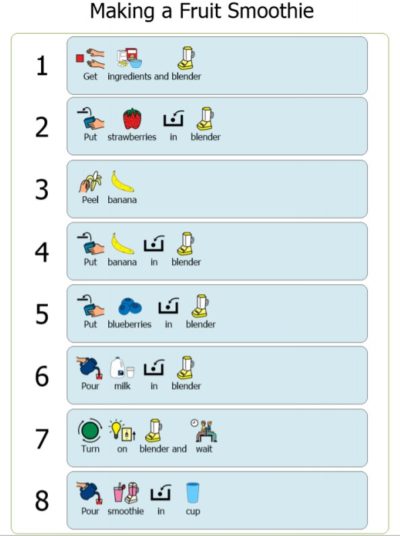
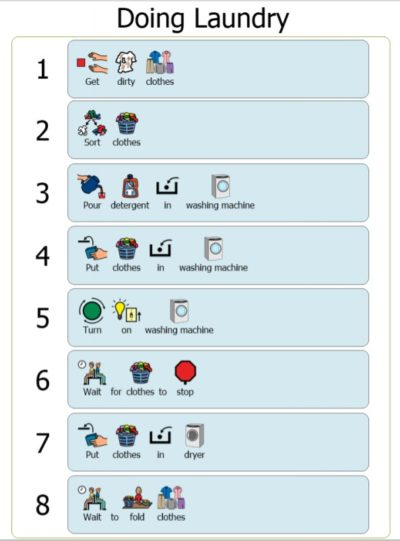

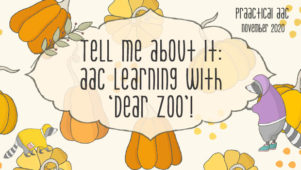
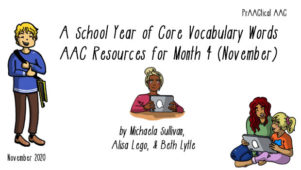
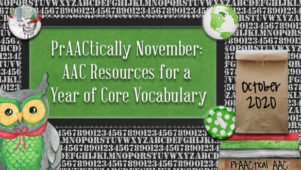
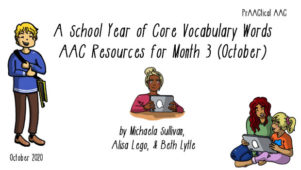
1 Comment
Hi, Do you have resources that are written for parents on how they can support the use of a device at home?